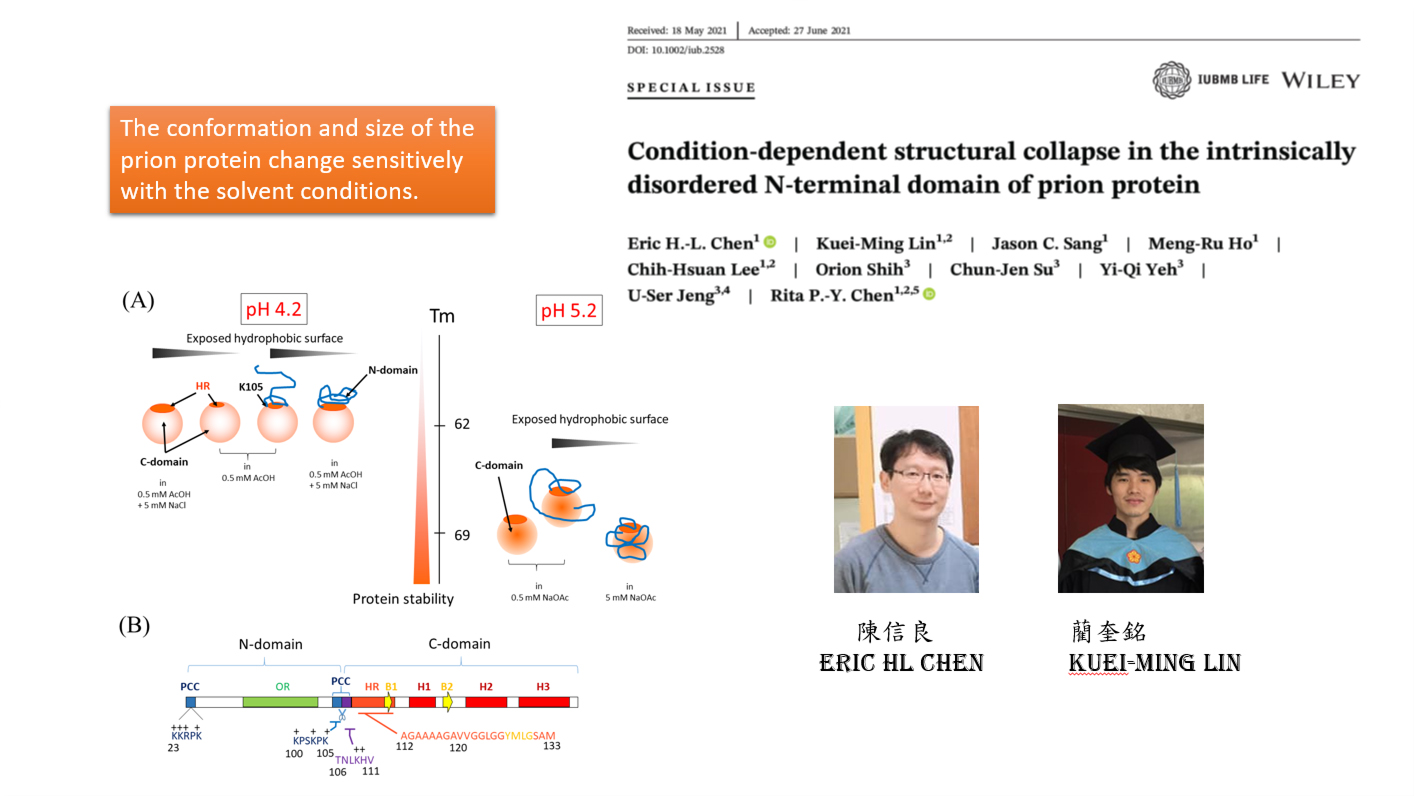
 中央研究院 生物化學研究所
中央研究院 生物化學研究所
Prion protein is composed of a structure-unsolved N-terminal domain and a globular C-terminal domain. Under limited trypsin digestion, mouse recombinant prion protein can be cleaved into two parts at residue Lys105. Here, we termed these two fragments as the N-domain (sequence 23-105) and the C-domain (sequence 106-230). In this study, the structural properties of the N-domain, the C-domain, and the full-length protein were explored using small-angle X-ray scattering, analytical ultracentrifugation, circular dichroism spectroscopy, and the 8-anilino-1-naphthalenesulfonic acid binding assay. The conformation and size of the prion protein were found to change sensitively under the solvent conditions. The positive residues in the sequence 23-99 of the N-domain were found to be responsible for the enhanced flexibility with the salt concentration reduced below 5 mM. The C-domain containing a hydrophobic patch tends to unfold and aggregate during a salt-induced structural collapse. The N-domain collapsed together with the C-domain at pH 5.2, whereas it collapsed independently at pH 4.2. The positively charged cluster (sequence 100-105) in
